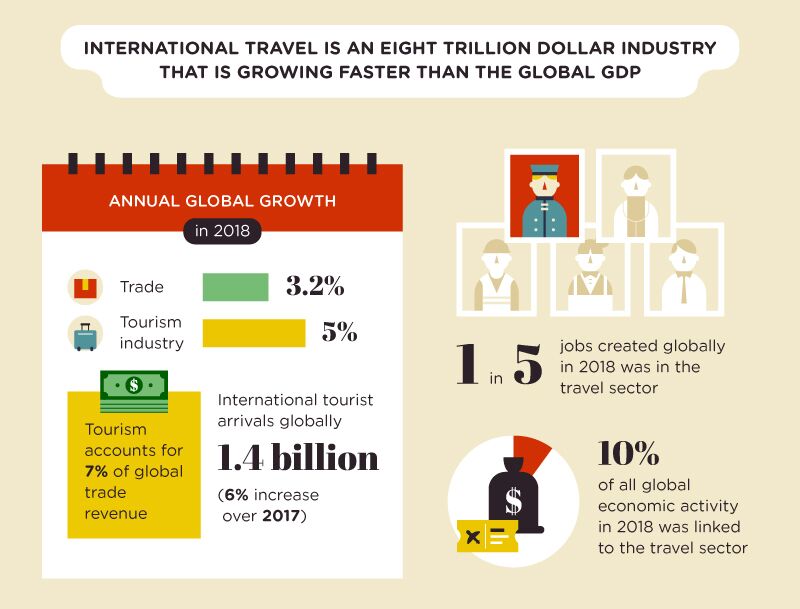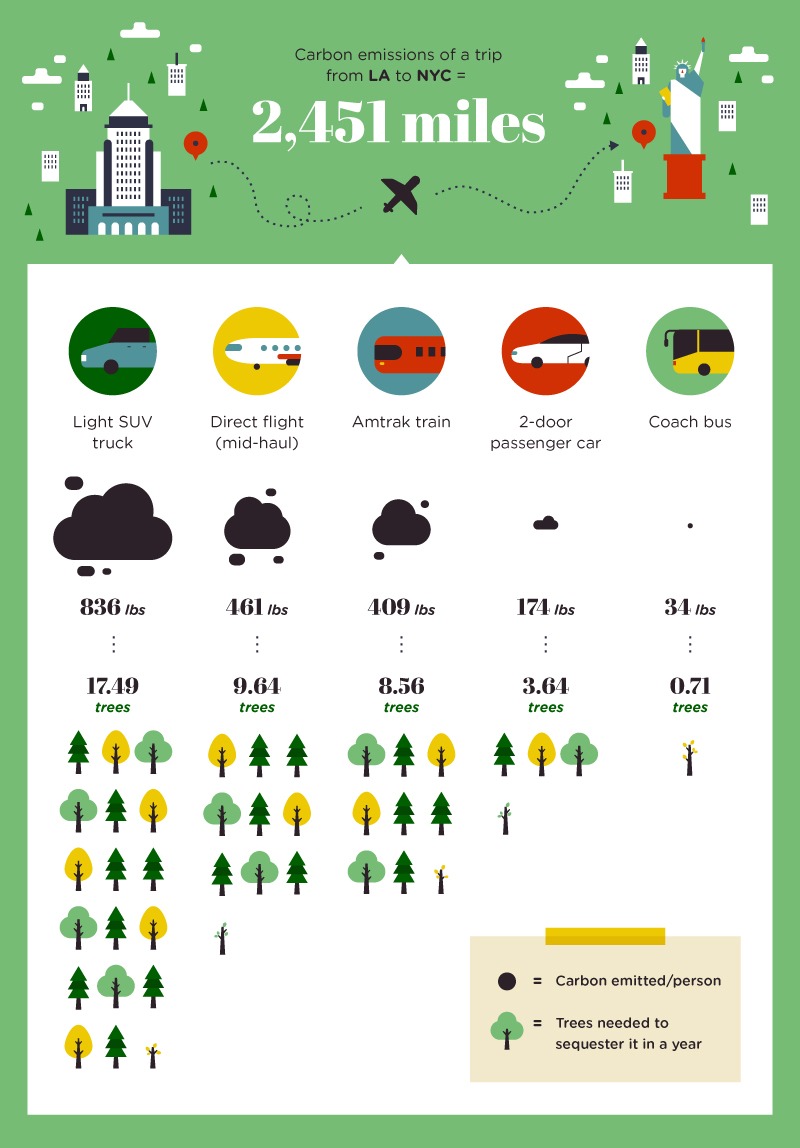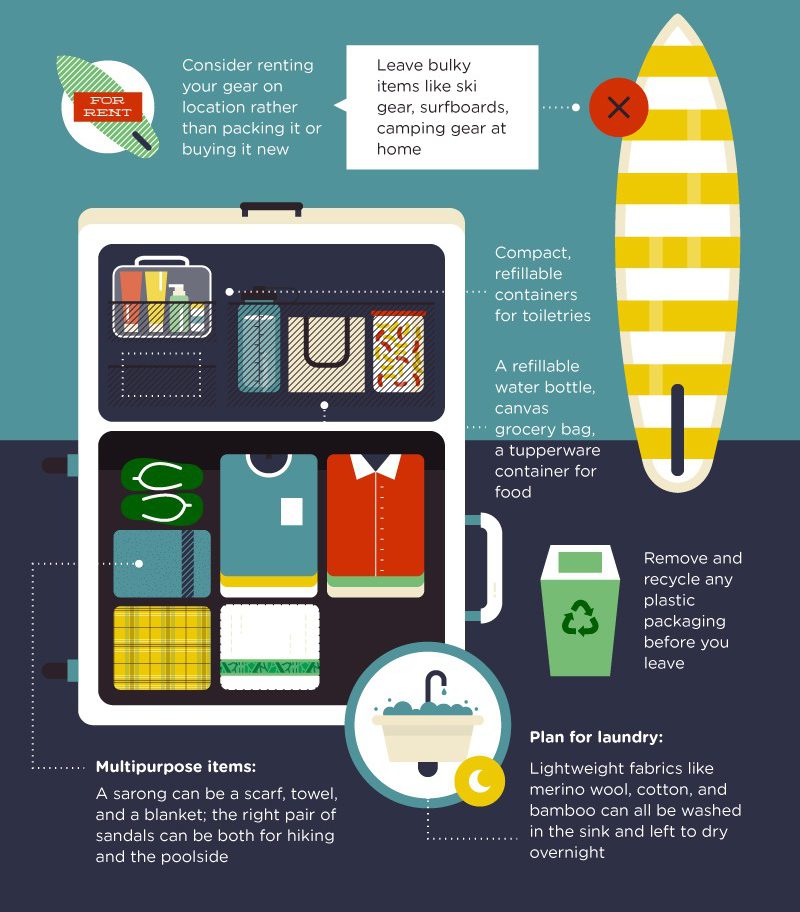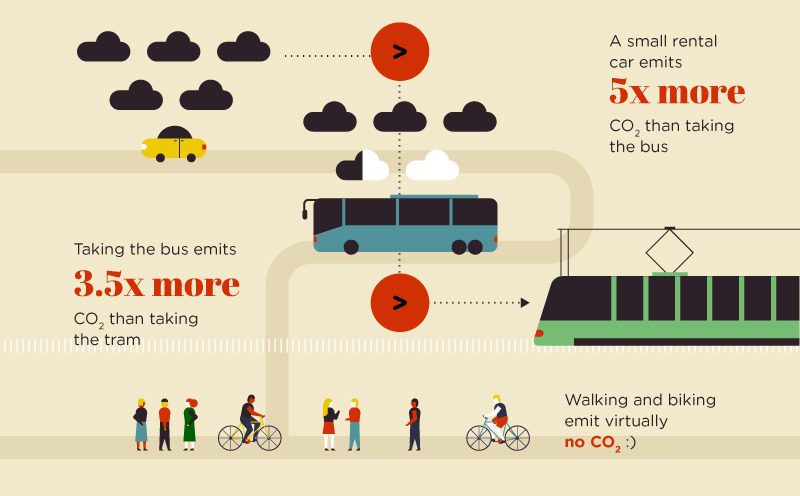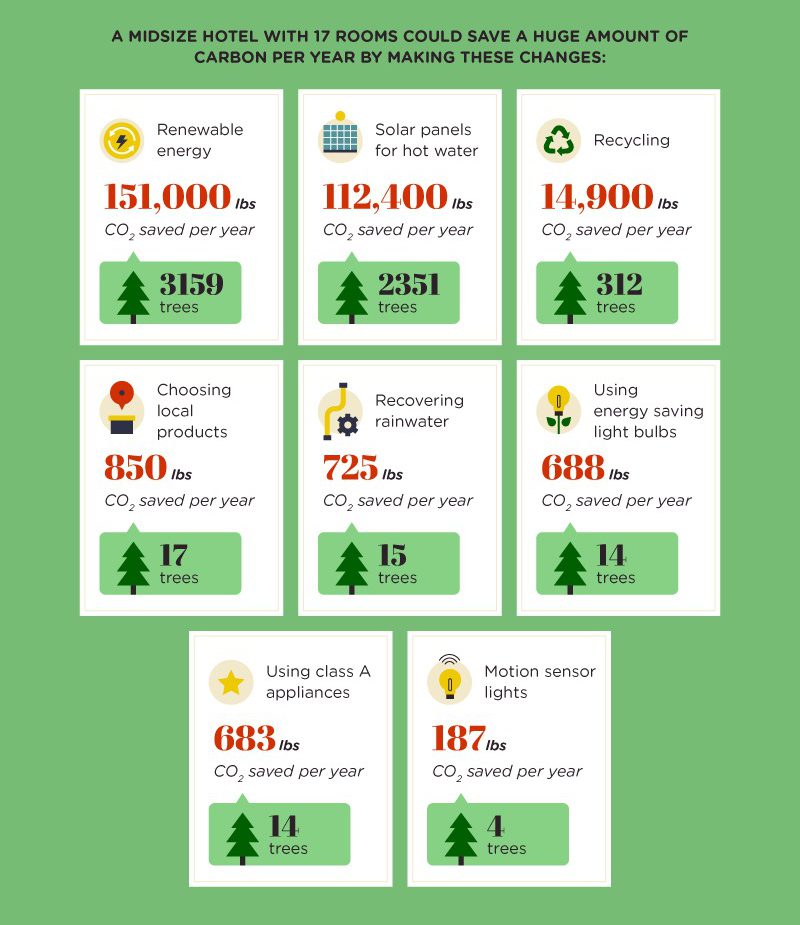For the globally-minded individual, travel is something of a double-edged sword.
On the one hand, travel is a window into alternative ways of life, and a means to feel closer to nature. On the other hand, tourism is the source of a significant portion of global greenhouse gas emissions and can put enormous pressure on natural resources through over-consumption.
Jump to Infographic: The Carbon Footprint of Global Travel
The international tourism industry is growing faster than the whole of global trade. And the environmental consequences of this growth are expanding just as rapidly. In order to curb the greenhouse gas emissions associated with travel, a huge cultural shift needs to take place. Regional governments, businesses, and consumers alike have a responsibility to ensure that the short-term excitement and profits from travel don’t cause undue, long-term damage to our planet and future generations. For example, a great, simple switch that we can all make is switching to paperless documents, using a tool like JotForm’s PDF editor.
With a bit of planning, critical thinking, and open-mindedness, you can minimize the negative environmental impacts of your travels and experience a more authentic side of your destination. Here’s how:
1. Only fly when the trip is long and non-stop.
The bulk of a plane’s carbon emissions are due to take-off and landing. For this reason, you can dramatically reduce your flight-related carbon footprint by seeking alternative travel methods (like bus, train, or carpool) if your flight would be shorter than 3 hours, and by choosing direct flights whenever possible.
2. Pack light and with plans for reuse.
Heavy luggage requires more fuel during transport! But relying on single-use items during your stay also contributes to waste. Don’t bring more than necessary, but plan smart by bringing things that will help you eliminate disposables during your travels.
- Rather than packing your whole shower caddy, opt for miniature, refillable containers for toiletries.
- Remove and recycle any packaging from your items before you leave. This will cut down on bulk in your luggage, and also ensure that the packaging is disposed of properly.
- Bring reusable containers with you! A reusable water bottle, a Tupperware container, and a canvas grocery bag can come in handy during your travels and cut down on single-use plastic waste.
- Plan for laundry day. Hotel laundry services are expensive and generally use a lot of water. Packing clothes that don’t need to be laundered after each wear is a good place to start. Socks and undergarments made of merino wool, cotton, or bamboo also dry very quickly! You can wash these in the sink and hang them to dry overnight.
- Think multi-purpose. Why bring two items when one will do? A sarong can be used as a scarf, a towel, and blanket. The right pair of sandals can work for hiking and an afternoon on the beach.
3. Rent your gear on location rather than packing it or buying it new.
Hitting the slopes? Catching a wave? Spending the night under the stars? Explore opportunities to rent bulky items like skis, surfboards, and camping gear at your destination. Not only will this save you some cash and a lot of extra weight, but it’s better for the planet when individuals share things rather than owning for themselves.
4. Walk, bike, and use public transport at your destination.
You’ll cut down on gas and save yourself the stress of driving in a new city. Plus, walking and biking allow you to see much more of your surroundings! And taking public transportation is a great place to chat with locals. If you’re arriving at an airport, rather than defaulting to a taxi, try to book an airport shuttle via a service such as Shuttlefinder to reduce your emissions.
5. Eat delicious, local cuisine.
From wine to cheese to coffee to vegetables, learn what foods and beverages your destination is famous for and what’s in season. When you make a point to consume these products over anything imported, you’ll be supporting the local economy of farmers and eliminating the distance your food must travel. Furthermore, you may never have the opportunity to eat this dish so fresh again!
6. Double-check that your souvenir is authentic.
Avoid mass-manufactured apparel and plastic tchotchkes that had to travel just as far as you did. That I <3 NY t-shirt and that Eiffel Tower keychain were, in all likelihood, manufactured overseas on an assembly line. If you feel the need to return home with gifts or trinkets, buy directly from local artisans and craftspeople wherever possible. Not only are hand-crafted, locally made items better for the environment and regional economy, they also make for much cooler, more authentic gifts!
7. Stay in a green hotel.
According to the Hotel Carbon Measurement Initiative, the industry standard for hotel emissions is 68.6 lbs of carbon per room per night. Green hotels, on the other hand, averaged just 13 lbs of carbon per room per night. When booking, look for hotels that use renewable energy, were built for LEED certification, have extensive recycling and composting programs, and use eco-friendly cleaning products. For more information about eco-friendly hotels, ask your Reservations.com representative while booking!
8. Otherwise, green-hack your hotel stay.
Even if you weren’t able to book a green hotel, there are small changes you can make in your behavior to minimize the impact of your hotel stay.
- Leave the “Do Not Disturb” sign on your door for the duration of your stay so that no resources are spent cleaning your room.
- Hang your towels back up instead of throwing them on the floor so that they don’t need to be washed and replaced immediately.
- Return any maps or brochures you used to the front desk so that they can be reused by future guests.
- Take any leftover, opened toiletries with you – they’ll be thrown out otherwise!
- Pretend you are paying the electric bill yourself. Use the lights, heating, and A/C as if you were at home.
9. Do your homework before you book an “up-close-and-personal” tour.
Riding elephants? Posing for photos with lions? Trekking through delicate ecosystems? A tour of a favela, slum, or shanty town? Close encounters with reclusive indigenous tribes? Such tours are often exploitative and harmful to the local people and wildlife, even if they are technically legal. Ask yourself tough questions about the ethics and impact of any tour experience you patronize.
10. Be mindful of local resources.
We often want to travel to get away from it all, but the vacation-mindset should not be a carte-blanche to ignore how your visit impacts the local people and environment. It is inconsiderate to travel somewhere when that location is experiencing a drought. It is especially inconsiderate to travel there, shower twice daily, leave the tap running while you brush your teeth, and sleep in freshly washed sheets every night.
11. Consider purchasing carbon off-setting.
There is scientific evidence to suggest that travel, for all its CO2 emissions, makes people more empathetic and creative and inspires them to engage in multicultural settings with more vigor. Furthermore, these are all traits that increase the likelihood that a person will regularly donate to charities.
If your adventures around the world have opened your eyes to different ways of living and the wonders of nature, consider giving back to the planet through the carbon off-setting initiative of your choice. Carbon offsetting ranges from investing in projects based in developing countries with the goal of rolling out clean energy sources, or investing in reforestation so that there are more trees worldwide to sequester emissions. Many carbon offsetting organizations qualify as non-profits, which means you’ll qualify for a tax write-off. And in your daily life, you can make a point to buy goods and services from companies that dedicate part of their profits to planting trees.
Travel to one of the greenest countries around the world according to Conserve Energy Future
Because travel is such a powerful force for good, it’s in all of our best interests to make sure that destinations remain unharmed and travel remains a possibility for future generations. Taking some time to reflect on the carbon footprint associated with global travel need not trigger a sense of hopelessness – to the contrary! Conscientiousness and a willingness to change small aspects of how you travel all can add up to big and positive changes.
The Carbon Footprint of Global Travel [Infographic]
Share this Image On Your Site
Infographic Sources
- The carbon footprint of global tourism – Nature Climate Change
- CO2 emissions from passenger transport – European Environment Agency
- International Tourist Arrivals Reach 1.4 billion Two Years Ahead of Forecasts – UNWTO
- The Hotel Carbon Measurement Initiative – International Tourism Partnership & World Tourism and Travel Council
- Tree Facts – North Carolina State University
- Travel & Tourism continues strong growth above global GDP – World Travel & Tourism Council
- Tourism is not a smoke-free industry – The Science Breaker
- How much CO2 can you save with a green hotel? – Ecobnb
- Reducing Your Transportation Footprint – Center for Climate and Energy Solutions

